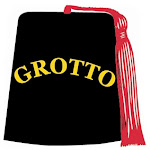I know, I know. I should have done this years ago. Like in 2004. But as of seven o’clock Monday night, I am a New York Freemason!
Who could resist the siren’s song and these inspirational lyrics?
Welcome to New York
Taylor Swift
Walking through a crowd
The Village is aglow
Kaleidoscope of loud heartbeats
Under coats
Everybody here wanted something more
Searching for a sound we hadn’t heard before
And it said
Welcome to New York
It’s been waiting for you
Welcome to New York
Welcome to New York
Welcome to New York
It’s been waiting for you
Welcome to New York
Welcome to New York
It’s a new soundtrack
I could dance to this beat, beat
Forevermore
The lights are so bright
But they never blind me, me
Welcome to New York
It’s been waiting for you
Welcome to New York
Welcome to New York
When we first dropped our bags
On apartment floors
Took our broken hearts
Put them in a drawer
Everybody here was someone else before
And you can want who you want
Boys and boys and girls and girls
Welcome to New York
It’s been waiting for you
Welcome to New York
Welcome to New York
Welcome to New York
It’s been waiting for you
Welcome to New York
Welcome to New York
Like any great love
It keeps you guessing
Like any real love
It’s ever changing
Like any true love
It drives you crazy
But you know you wouldn’t change
Anything, anything, anything…
Welcome to New York
It’s been waiting for you
Welcome to New York
Welcome to New York
Welcome to New York
It’s been waiting for you
Welcome to New York



































































.jpg)




